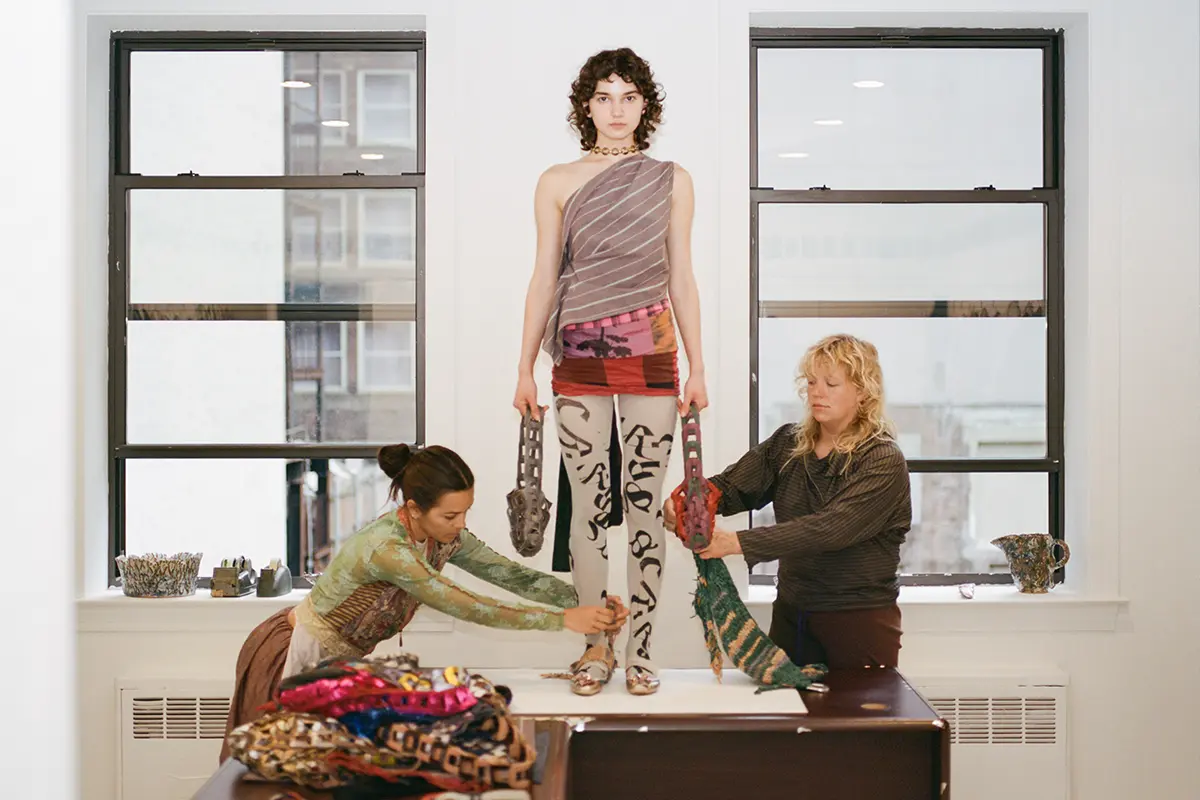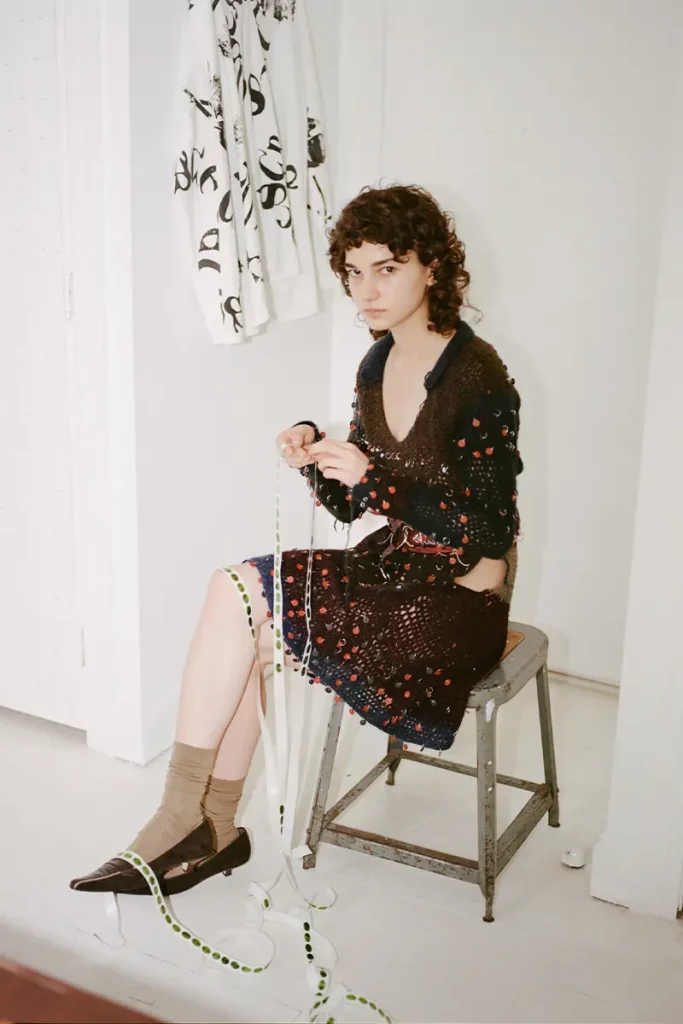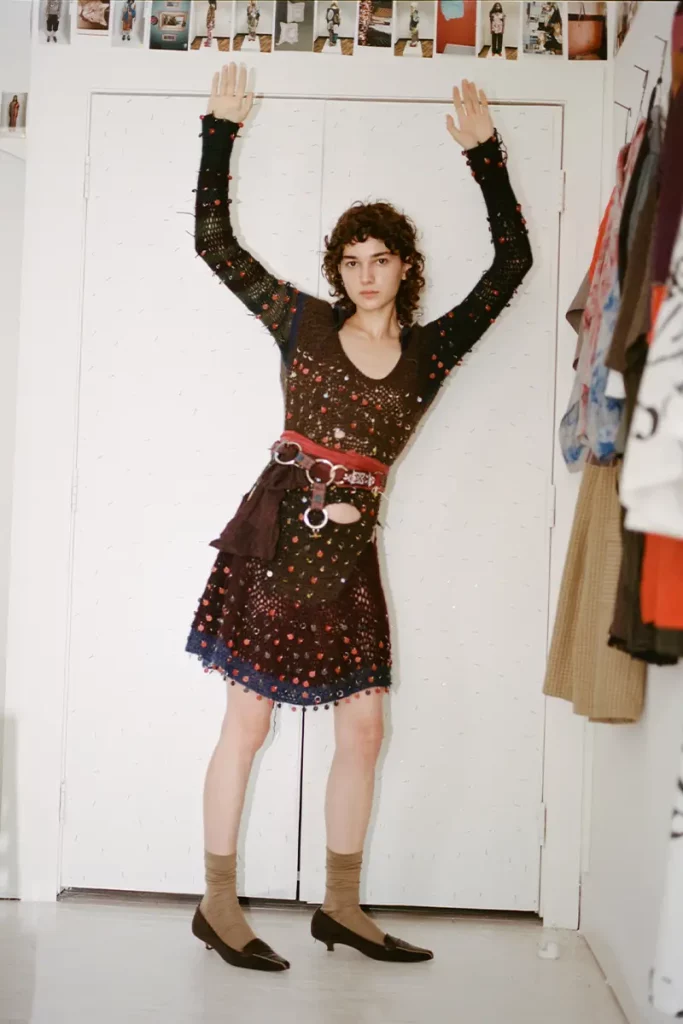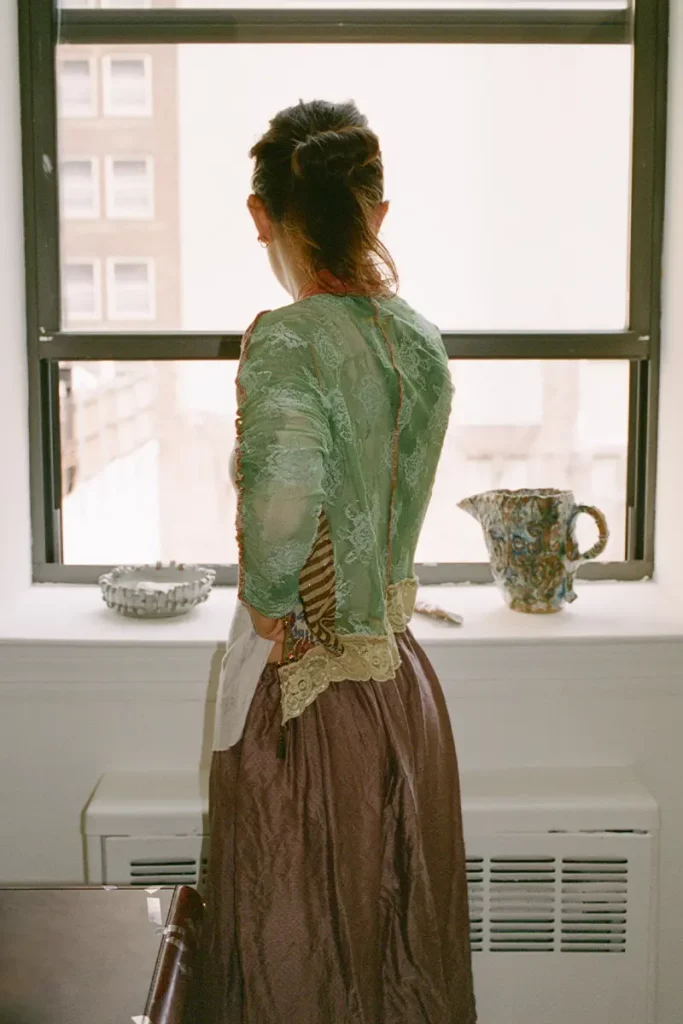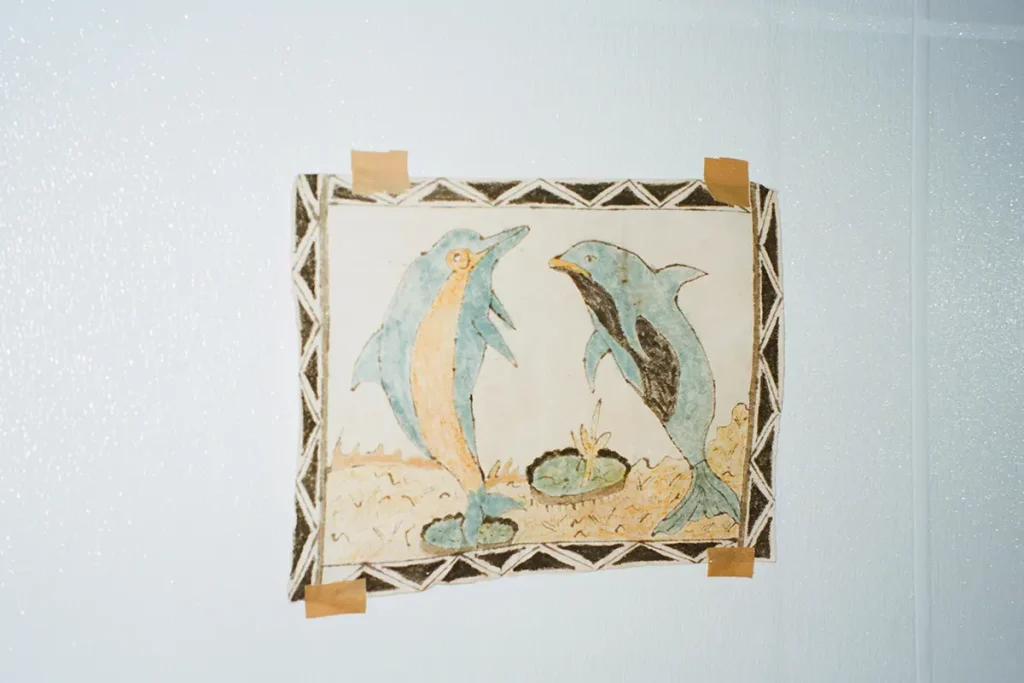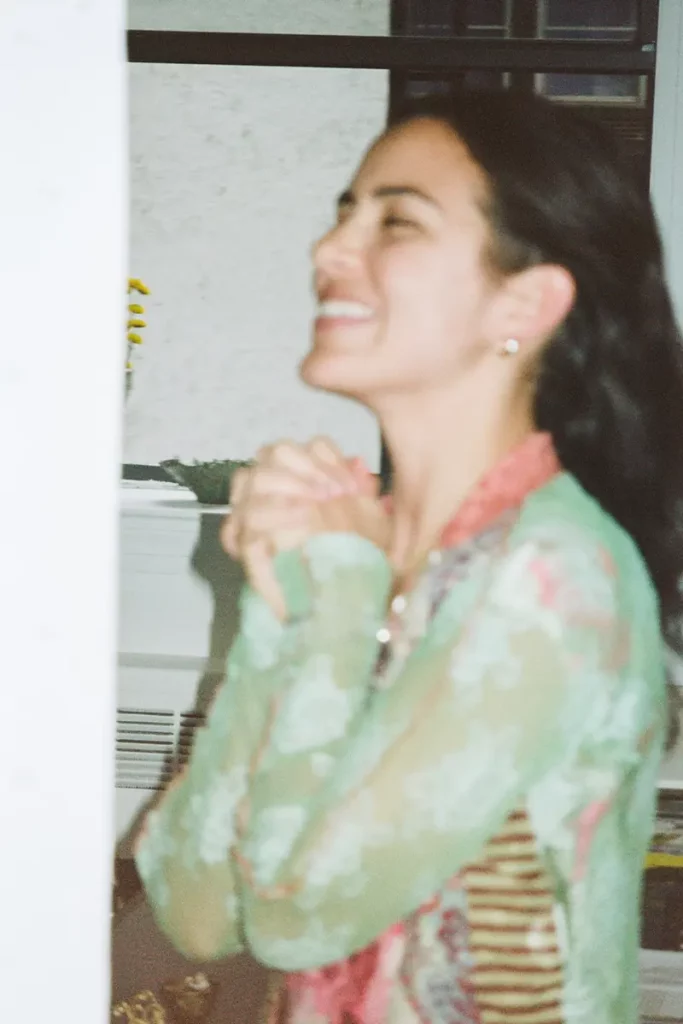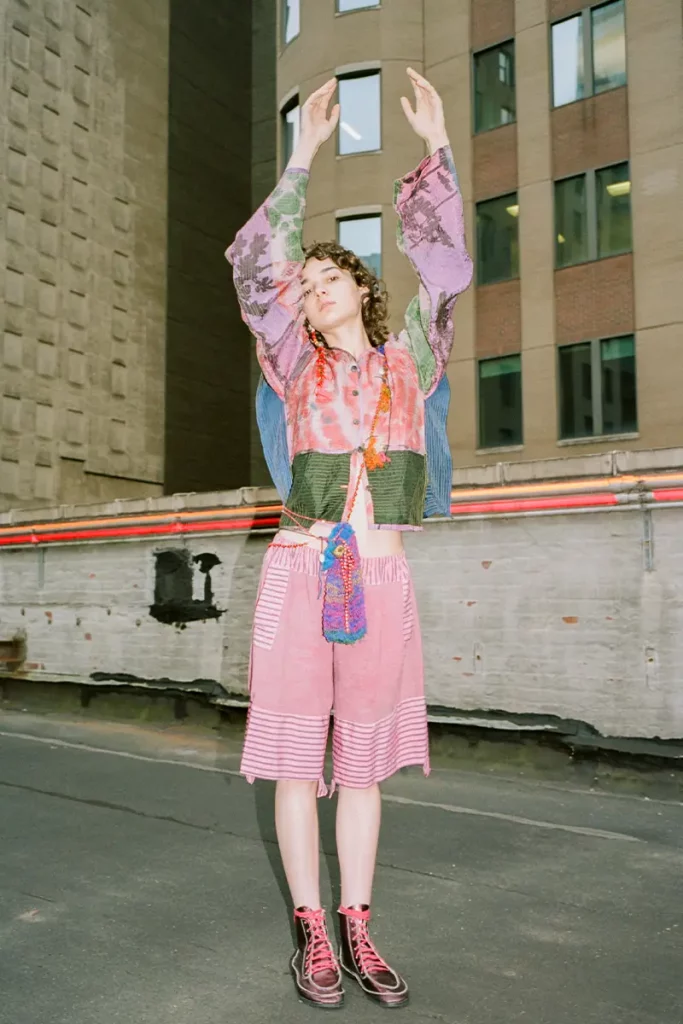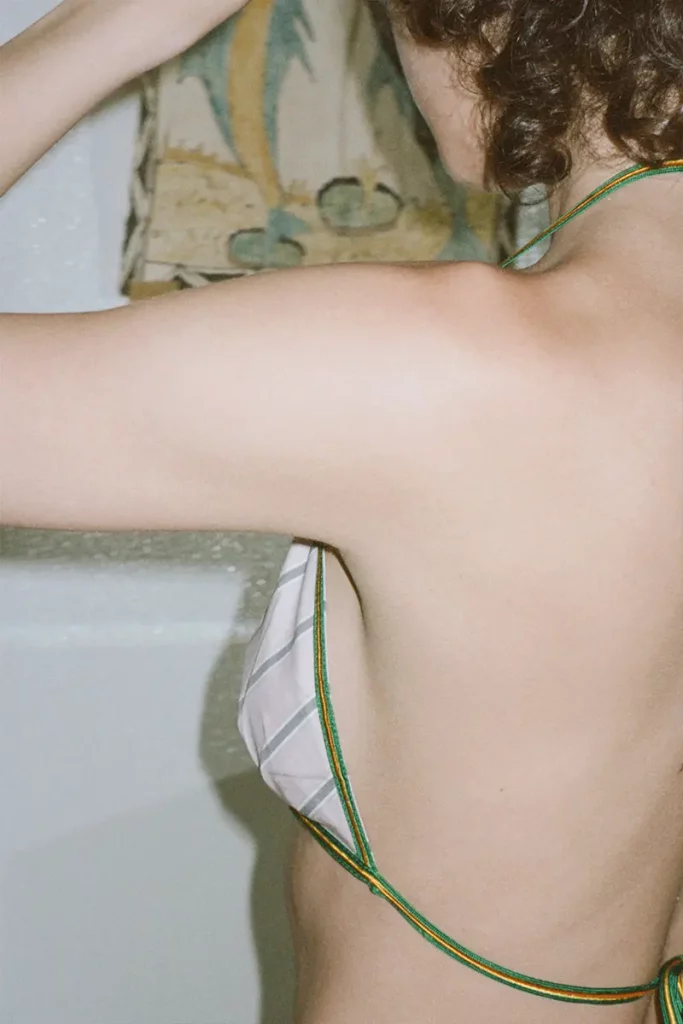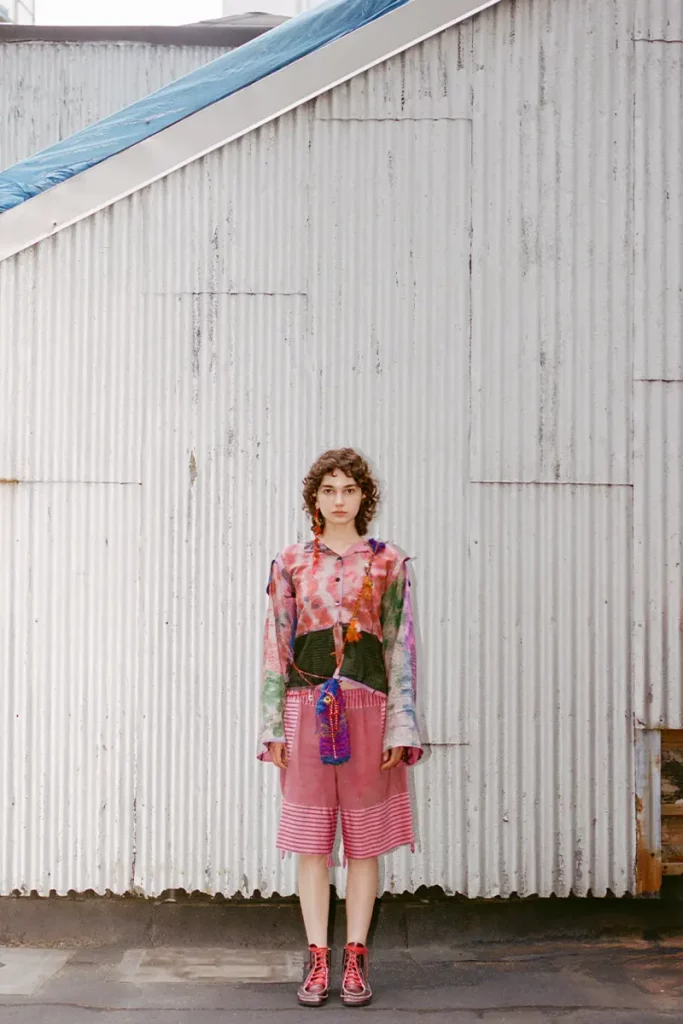Whether bringing back mementos from their hometowns or finding meaning in reusing materials, Sophie Andes-Gascon and Claire McKinney constantly forge connections and preserve memories
Sophie Andes-Gascon and Claire McKinney moving to New York
Sophie Andes-Gascon and Claire McKinney spent the past twelve years in New York, with their paths converged at Pratt Institute. McKinney was coming from Oregon without any prior connections in the city. The idea to move had taken root at a young age, shaped by movies and TV shows. McKinney felt a sense of belonging without ever setting foot in New York.
Although the first year was still emotionally challenging, finding a friend and, later on, a collaborative partner, Sophie Andes-Gascon, was a way to adapt.
Andes-Gascon came from a Canadian-Brazilian background. Andes-Gascon spent the early years of her life living in Brazil, where her mother’s family resides. Later, her family of four made their way from Brazil to a location just outside DC, a four-hour drive from New York. During the teenage years, Andes-Gascon would spend weekends sewing. Andes-Gascon moved to New York to attend Pratt Institute.
Sophie Andes-Gascon and Claire McKinney’s early work
«During the time at Pratt, work and our future careers were frequently on our minds. It was a period of growth and learning where we honed our skills as designers, fully aware that we would eventually work for other designers once we graduated. The school became a canvas for us to explore our aesthetics, style, and the elements defining us as fashion designers».
Designers often return to those formative years and reflect on early childhood and family histories. There’s a deep-rooted connection to garments, an understanding of their purpose beyond the surface. Whether bringing back mementos from Brazil or finding meaning in reusing and repurposing materials, they constantly seek to forge connections and preserve memories.
«I remember an elderly neighbor who would trade clothes with me from my childhood. It’s a memory that has stayed with me, shaping my perspective on the value of garments that have lived a life and carry their own stories», said Sophie Andes-Gascon.
Andes-Gascon and McKinney infuse their designs with a sense of narrative, ensuring that each piece carries its unique history. It’s a way to weave together the threads of past and present, creating a meaningful tapestry for the clients and their special occasions.
SC103 – the founding story
SC103 remains as a team of two, Sophie Andes-Gascon and Claire McKinney. The brand started as a project, a desire to produce a collection, engage with the community, and contribute to the fashion industry. They built the brand in reverse, creating and showcasing their work before establishing a concrete business structure.
Andes-Gascon and McKinney are creating their designs and coming together to share and review each other’s proposals. This involves a lot of trust and mutual admiration. There’s a natural balance between them– both remain equally involved in development and business. Almost everything is made in-house.
Regarding designers’ approach to shows, they have chosen to strip away the industry’s expectations, keep things simple, and focus on the purpose of showcasing a collection. They prioritize the collection’s essence, moving it down the runway.
SC103 and remaining true to their vision, Andes-Gascon and McKinney
They handle their own invites, ensuring a democratic approach where everyone, including Claire’s students, is welcome (McKinney teaches at Pratt Institute part-time). Runway photographers and models are usually also coming from the friend group. By keeping the production within their circle, they maintain a sense of autonomy and ensure that the process aligns with their values.
Andes-Gascon and McKinney aim to create an inclusive and accessible space for their events, even if it means facing challenges in finding suitable venues. Some locations were a gallery and youth center gym, where the main priority was to experience the brand in a welcoming atmosphere. Recently, designers transformed their studio into a temporary store to connect with supporters and expand connections.
By prioritizing the essence of SC103 and remaining true to their vision, Andes-Gascon and McKinney have found a way to navigate the industry’s complexities while staying true to themselves.
«We’re constantly hauling stuff and making things by hand. And that’s part of it we love».
the designing process behind SC103
SC103 approach contains two parts. The first part involves creating unique, intricate, and handmade items. These pieces are carefully crafted and often one-of-a-kind, making them notable additions to runway settings. Some items were also developed in Midtown, ensuring the same level of thoughtfulness and craftsmanship.
Designers constantly evaluate their collections and have ongoing discussions about specific items. Some pieces only exist within the show or editorial context, while others can be produced commercially. SC103 now offers iterations of certain styles that are more accessible and can be made for a wider audience.
«Our collection development process is a dynamic one. It begins with building our wardrobe, considering the shapes and styles we want to wear in the upcoming months. From there, we delve into more abstract and personal ideas, which we share and explore. This process allows us to create unique and thoughtful pieces that reflect our vision and personal journeys».
Another approach. SC103 on developing their collections closer to the show
SC103 has the advantage of working in-house, allowing designers to be flexible and up-to-date. «Unlike traditional brands that plan collections well in advance, we develop our collections closer to the show or shoot date, making adjustments and creating iterations until the event. This approach gives our collections a current and timely feel, serving as markers of our creative routine».
«We enjoy the freedom of making spontaneous decisions. The makeup for our last show was determined hours before the show, with our friend experimenting and adding unexpected elements».
A range of people appreciate and wear SC103 designs, from moms to dads and a wide variety of individuals.
It also translates to the designers’ personal style, primarily SC103, thrifted items, and comfortable basics. «We prioritize comfort and practicality in our daily studio attire, and this influence transfers into our collection. We believe in creating designs that are not only visually appealing but also wearable and comfortable for everyday life».
The inspiration behind the Links Tote, a commercial piece for SC103
The inspiration behind the Links Tote, a commercial piece for SC103, stems from the desire to work with leftover leather. Initially, designers encountered flawed leather pieces with minor surface details and sought a way to incorporate them into designs. This led to exploring the concept of a steel dye, a tool that punches the leather to create pattern pieces.
«We started with a single unit of the element that forms the bag, utilizing one small piece for each bag. It also drew from traditional shapes we had seen at a leather manufacturer in the garment district, reminiscent of styles from the ’60s or ’70s, likely originating from factory cuttings. We reimagined and rethought these shapes into our larger linked design».
The entire process began while planning SC103’s first show in 2019. This linking technique became the initial bridge between the designer’s two unique ways of working – individual aesthetics and languages of design, embodying the duality within their collection.
«Working on the first piece using this method required us to sit together at the same table, physically collaborating and workshopping the design. It was a tangible representation of our partnership and the beginning of a creative dialogue that continues to shape our work».
The launch of SC103 fragrance, Relic – No. 1
«Fragrance is such a tactile element that anyone can just pick it up in store. But it adds other dimensionality to the brand, building the world of SC103».
The launch of their fragrance, Relic – No. 1 (2023), which coincided with the store opening, resulted from Andes-Gascon and McKinney’s shared experiences and interests in scents. They drew inspiration from natural oils, such as patchouli, oud, vetiver, and amber, and their connection to nature. Collaborating with a talented perfume maker in Portland, who created a fragrance that embodied their collective vision.
The fragrance was sold out almost immediately, so they had to reorder for a pop-up store. There was no press appearance or advertisement involved besides their Instagram page. «I saved one for my mom, brother, and some friends. We ordered an edition of fifty and then did it again».
SC103 – a Holistic approach
Given the current focus on issues such as the climate crisis, overproduction, and unconscious consumption, the purpose of SC103 is deeply connected to the intimate relationship with every piece they create. Designers maintain a hands-on approach, ensuring that each item is touched by their hands. Whether they produce it in their studio or make it unit by unit in the garment district, they maintain a close connection to the production process.
«It’s unnatural to imagine being in a place where we don’t get to have our hands in everything.
We want to slowly grow by including more people in our world. But we still have to enjoy a day-to-day process through our lives».
SC103
SC103 is a collaborative project of two designers, Sophie Andes-Gascon and Claire McKinney. They met during sophomore year at Pratt Institute and have shared an apartment ever since. After graduation, both designers worked full-time for other designers while developing their lines. McKinney later took the role of production manager at MNZ, and Gascon worked as a design developer at Ulla Johnson. A few years ago, they left full-time jobs to fully concentrate on SC103.
Photography Andres Altamirano, Styling Ana Tess
Photographer: Andres Altamirano
Stylist: Ana Tess
Model: Eto Migriauli


